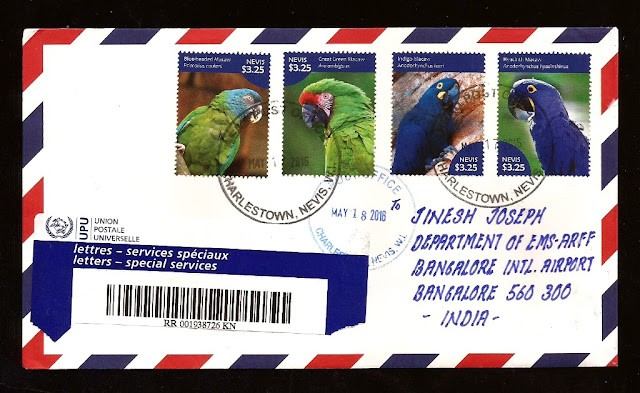Nevis is a small island in the Caribbean Sea that forms part of the inner arc of the Leeward Islands chain of the West Indies. Nevis and the neighbouring island of Saint Kitts constitute one country: the Federation of Saint Kitts and Nevis.
Nevis is located near the northern end of the Lesser Antilles archipelago, about 350 km east-southeast of Puerto Rico and 80 km west of Antigua. Its area is 93 square kilometres (36 sq mi)
and the capital is Charlestown. Saint Kitts and Nevis are
separated by a shallow 3-kilometre (2 mi) channel known as "The Narrows".
The island was named Oualie ("Land
of Beautiful Waters") by the Caribs and Dulcina ("Sweet Island") by the early
British settlers. The name Nevis is derived from the Spanish Nuestra Señora de
las Nieves (which means Our Lady of the Snows
Nevis is also known by the sobriquet "Queen of the
Caribees", which it earned in the 18th century when its sugar plantations
created much wealth for the British. Nevis is of particular historical
significance to Americans because it was the birthplace and early childhood
home of Alexander Hamilton. For
the British, Nevis is the place where Horatio Nelson was stationed as a young sea captain, and is
where he met and married a Nevisian, Frances Nisbet, the young widow of a plantation-owner. The majority of the approximately 12,000
Nevisians are of primarily African descent, with notable British, Portuguese
and Lebanese minority communities. English is the official language, and the
literacy rate, 98 percent, is one of the highest in the Western Hemisphere.
An independence referendum
was held in Nevis on 10 August 1998. Although it was approved by 62% of
voters, a two-thirds majority was necessary for the referendum to succeed. If
it had passed, Nevis would have seceded from the Federation of Saint Kitts and Nevis.
The British Leeward Islands - Antigua, Dominica, Montserrat, Nevis, St. Christopher (St. Kitts), and the Virgin Islands all used postage stamps inscribed "LEEWARD ISLANDS" between
1890 and 1 July 1956, often concurrently with stamps inscribed with the
colony's name. Nevis, a British colony in the Leeward Islands, began issuing stamps in 1861. The first
stamps depicted the seal of the colony showing women at a medicinal spring.
Issues from 1879 featured the portrait of Queen Victoria. Between 1890 and 1903
it used the stamps of Leeward Islands. Between 1903 and June 1980 it used the
stamps of St. Kitts and Nevis (St. Christopher Nevis Anguilla
from 1952), concurrently with the issues of the Leeward Islands until 1956. Although
Nevis is part of St. Kitts and Nevis, in June 1980 a separate postal
administration was established on the island and it began producing its own
sets of stamps. Between 1890 and 1903, stamps of the Leeward Islands were used
on the islands.
Saint Kitts and Nevis
started issuing stamps in 1903. These were used concurrently with the stamps of
the Leeward Islands until July 1, 1956. Starting in 1952, stamps were inscribed
St. Christopher Nevis and Anguilla. On February 27, 1967, St. Christopher–Nevis–Anguilla
achieved Associated Statehood
. However, Anguilla proclaimed independence from Saint Kitts and Nevis in July
of the same year, and began issuing its own stamps. Stamps inscribed St.
Christopher Nevis and Anguilla were issued for Saint Kitts and Nevis until
1980.

The cover posted from Charlestown, the main post office on April 21, 2015, received on May 18, 2015.
This is my first airmail cover from Nevis.It is the part of St.Kitts and Nevis, but Nevis stamps cannot use in St.Kitts and vice versa. One country but two postal administration. The cover posted from Charlestown, the main post office on April 21, 2015, received on May 28, 2015.
This is my first airmail cover from Nevis.It is the part of St.Kitts and Nevis, but Nevis stamps cannot use in St.Kitts and vice versa. One country but two postal administration. The cover posted from Charlestown, the main post office on April 21, 2015, received on May 28, 2015.




No comments:
Post a Comment
Note: only a member of this blog may post a comment.